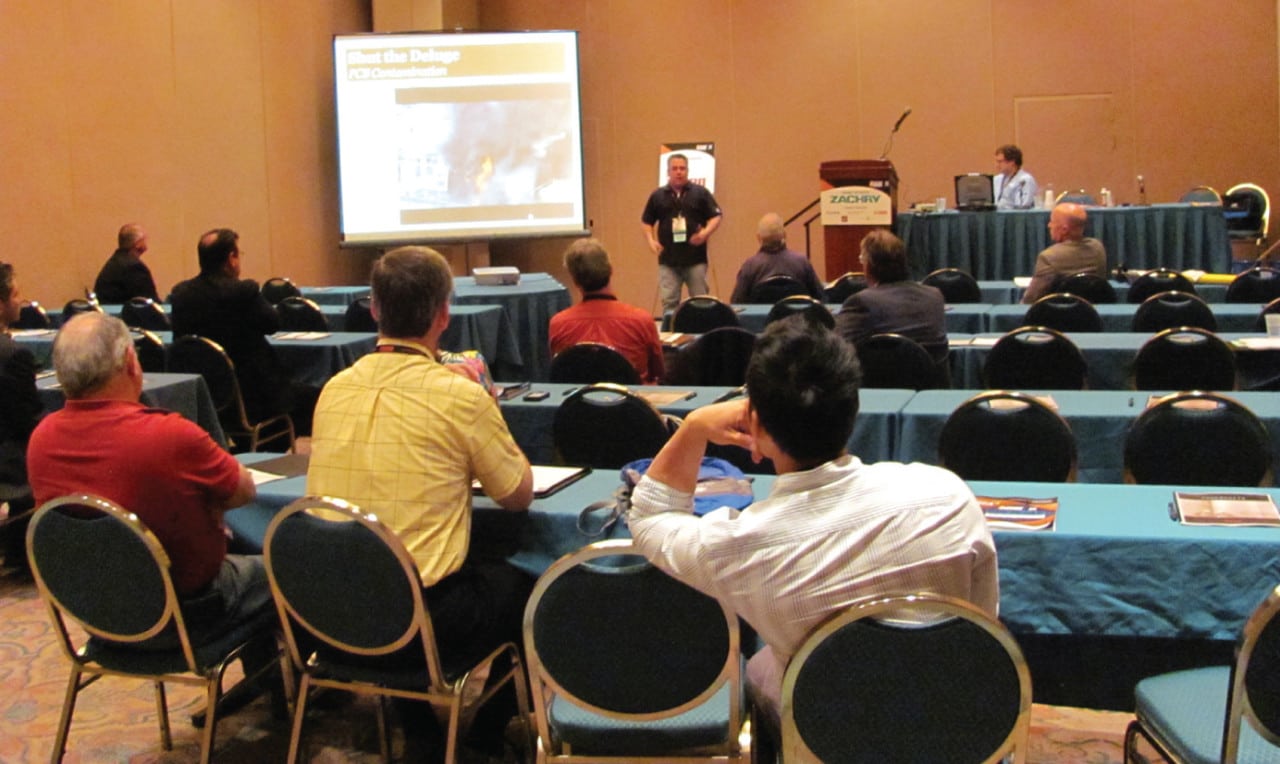Fighting Transformer Fires
Transformer fires are fearsome events, perhaps the most dangerous common threats to human life—both onsite and beyond the boundaries of a power plant—that can hit an electric utility.
Fire in an electric station is a destructive, demoralizing, disastrous event under most circumstances. Transformers fires—whether at large equipment in major switchgear centers or at smaller distribution centers that serve homes and businesses—are particularly fearsome. They involve fire, explosion, high-voltage electrical arcs, oil ignition and dispersion, and potential injuries or death to community firefighters who may not have a clue how to deal with a fire in electrical switchgear. Transformers fires aren’t on the scale of the Fukushima nuclear power catastrophe that struck Japan in March 2011, but they are much more likely and frequent. They are the nightmares of electrical system operators.
So when lightning strikes (peeling the high-voltage transformer open like a can of sardines) and hits your grid, or transformer insulation fails, or a kid with a high-powered rifle and a penchant for mischief shoots into a transformer, who do you call? Try Anthony Natale.
Natale, who gave a gripping presentation at ELECTRIC POWER 2013 in Chicago this May, may be the world’s expert in fighting transformer fires. He’s New York City’s doyen of transformer fires, as a key employee in Consolidated Edison’s emergency management response group and a professor at the Fire Department of New York’s (FDNY) Fire Academy, where he has changed the FDNY approach to fighting transformers fires.
Natale, a short, stocky Italian-American who talks with his hands as much as his voice, is the claxon of caution to fire departments that are summoned by fire alarms and citizens to transformer fires. He’s so energetic he could probably be hooked into the grid. And he can intimidate the brashest of firefighters into caution in the face of electrical fires (Figure 1).
|
|
|
1. Powerful personality. Consolidated Edison’s Anthony Natale showed |
Making New Rules
Natale and his coworkers have established iron-clad rules that FDNY must follow when called to a fire at an electric transmission or distribution substation or even a transformer fire on a local distribution pole. These are specialized fires. The utility workers, far more than the firefighters who arrive in trucks with lights spinning and sirens squealing, understand the intricate dangers. Lives, far more than millions of dollars of on- and off-site damages, are at stake.
Some of the lessons firefighters must heed are surprisingly simple to those who understand electric generation and distribution. Wires, which may be on the ground in a substation, are not insulated, unlike the wires from a lamp or to a TV in the home. They are energized and can kill, and firefighters need to understand that threat.
Other threats are more substantial. Transformers contain copious amounts of oil, used as insulation. The oil can ignite at 300F. Transformers can not only ignite but, as Natale showed in a series of YouTube videos (frequently shot by clueless amateurs), they can explode.
Most firefighters are aggressive when it comes to fighting fires, noted Natale. They want to go toward the blaze and attack it. But the key to fighting transformer fires is to curb this tendency, as the utility knows the hazards of electrical fires—including energized systems, the threat of arcing voltage, and the potential of explosive oil fires—far better than firefighters arriving on the scene.
ConEd and FDNY have developed a series of operating conventions to ensure that the utility takes control of the fire scene in a transformer fire. Among the most important is an unconditional “STOP” sign at the utility gate. It’s crucial, Natale said, that off-site firefighters don’t bull their way into the fire scene and get themselves and others into trouble.
A utility worker—a “white hatted” utility incident commander—will meet the fire department crew at the gate, Natale said, to talk about a plan for fighting the fire and marshaling people and equipment. Inside the gate is a lock box for the FDNY responders to use. It contains a book that includes a site map, overhead photos of the site, information about the distribution of PCBs on the site, and the location of important equipment, including water sources, pumps, and the like. This information, along with the utility incident commander, provide the guidance for fighting what are often the most difficult and dangerous fires that can strike an electric utility system.
— Kennedy Maize is executive editor of MANAGING POWER and a POWER contributing editor.
